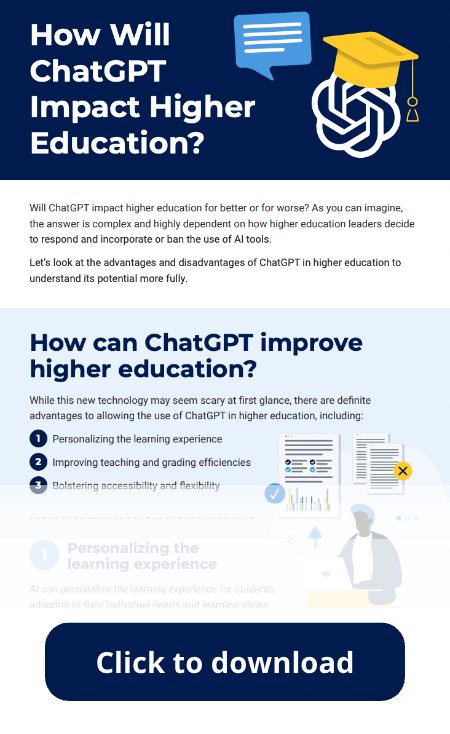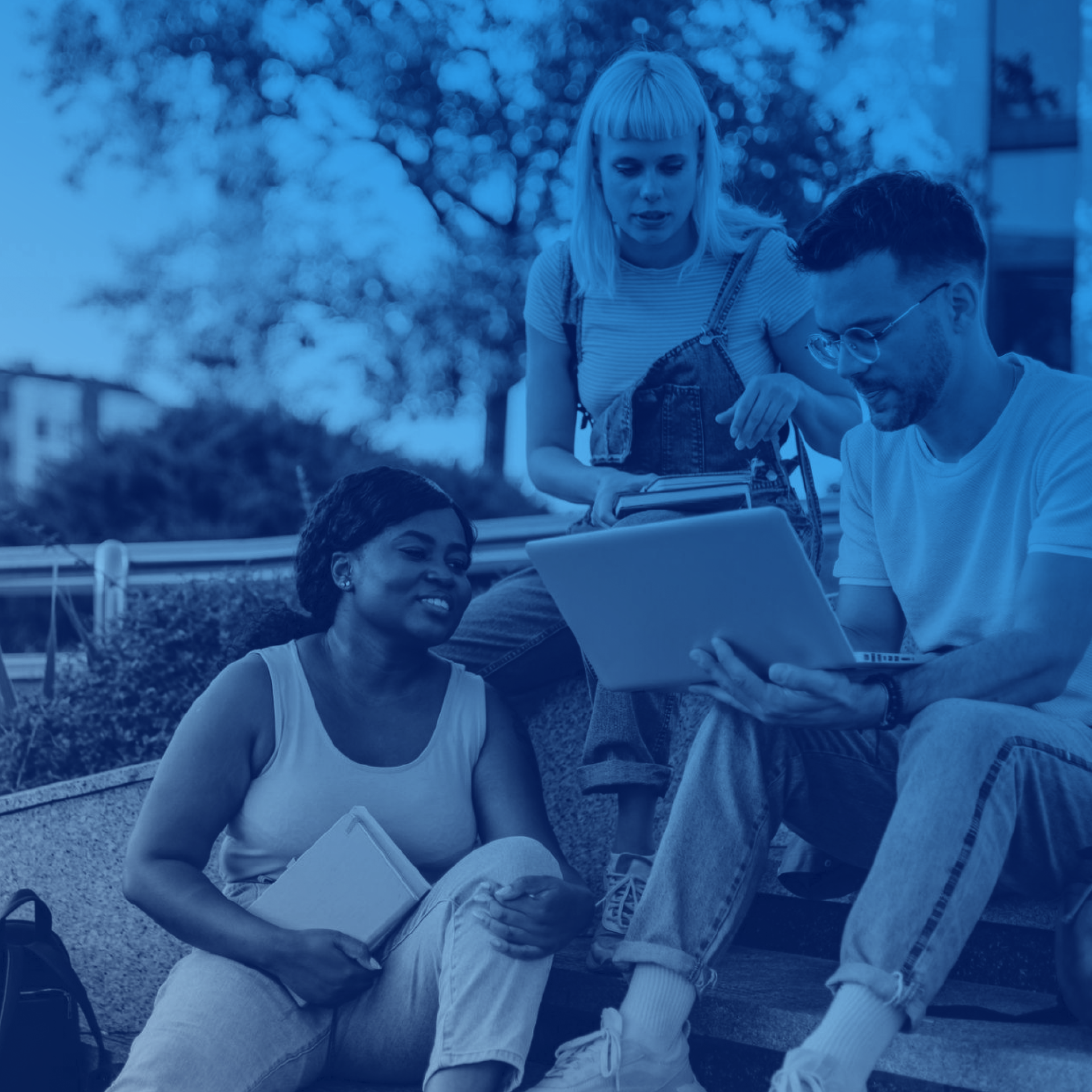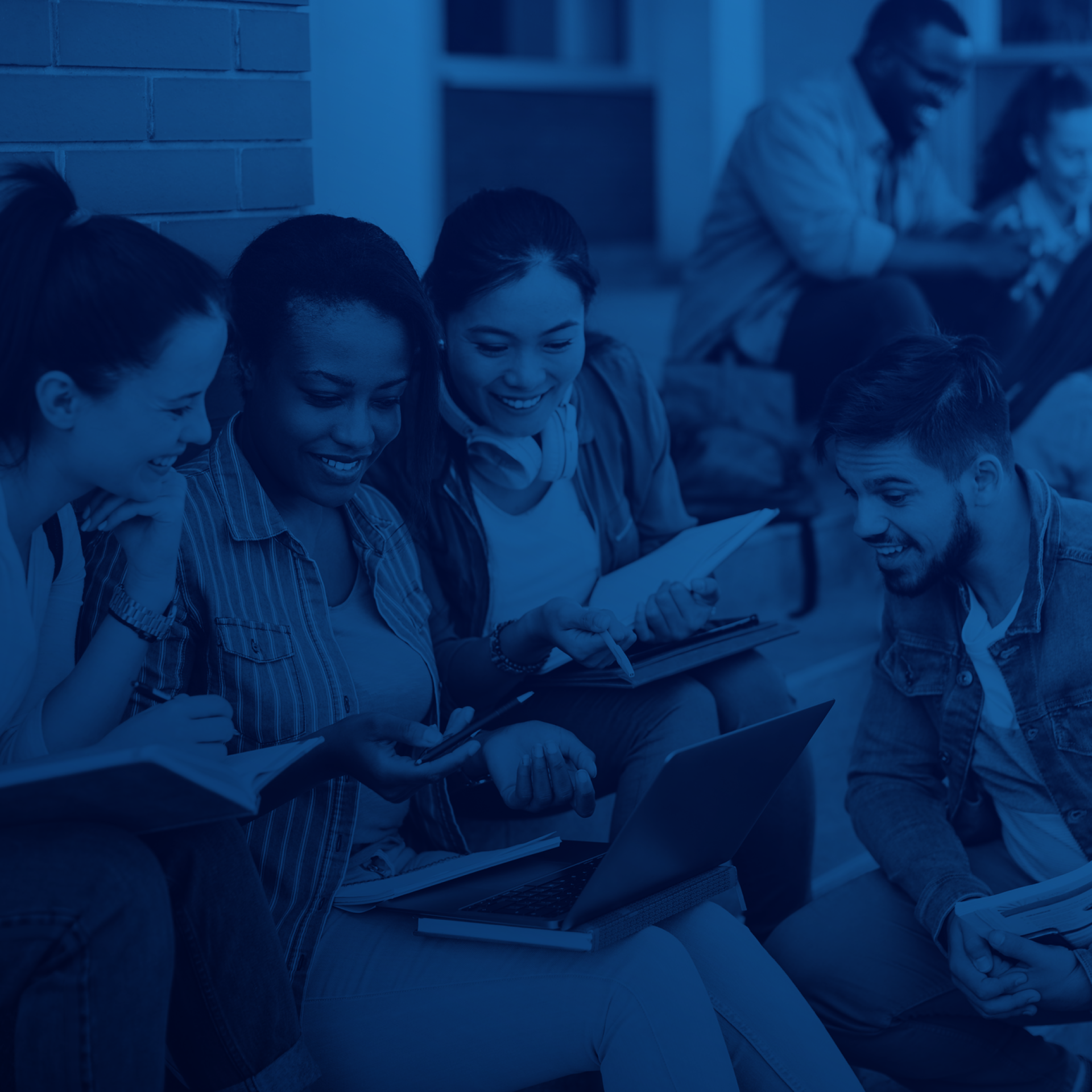The launch of ChatGPT has sent shockwaves through higher education.
A whole new way to complete assignments is suddenly easily accessible to students, and institutions worldwide are scratching their heads as to what sort of policies they should put into place to ensure academic integrity and fairness while continuing to foster progress and innovation. Some are scared by the implications of artificial intelligence tools, while others are excited at the possibilities they could present for higher education.
Will ChatGPT impact higher education for better or for worse? As you can imagine, the answer is complex and highly dependent on how higher education leaders decide to respond and incorporate or ban the use of AI tools.
Let’s look at the advantages and disadvantages of ChatGPT in higher education to understand its potential more fully.
How can ChatGPT improve higher education?
While this new technology may seem scary at first glance, there are definite advantages to allowing the use of ChatGPT in higher education, including:
- Personalizing the learning experience
- Improving teaching and grading efficiencies
- Bolstering accessibility and flexibility
1. Personalizing the learning experience
AI can personalize the learning experience for students, adapting to their individual needs and learning styles and providing tailored feedback and support.
For example, ChatGPT can ask students questions about their learning preferences and adapt its content accordingly. If a student prefers visual aids, ChatGPT can provide more diagrams and images to help explain a concept.
2. Improving teaching and grading efficiencies
ChatGPT can assist faculty with time-consuming tasks such as grading, providing feedback, and answering common student questions. This extra help would free educators to focus on higher-level tasks such as developing curriculum and teaching complex concepts.
3. Bolstering accessibility and flexibility
ChatGPT can make education more accessible by providing students with a convenient and flexible learning experience. It can be accessed from anywhere and at any time, making it a valuable tool for students who may not have access to traditional forms of education.
How can ChatGPT hurt higher education?

While there are advantages to ChatGPT, there are also some potential disadvantages. The key is to become aware of these possible pitfalls so that higher education can use ChatGPT to its greatest benefit. Some potential disadvantages include the following:
- Faculty and students could become over-reliant on AI
- Critical thinking skills could diminish
- Answers could contain bias and errors
1. Faculty and students could become overreliant on AI
There is a risk that educators and students may become overly reliant on AI technology, potentially diminishing the role of human expertise in the teaching and learning process.
2. Critical thinking skills could diminish
Suppose students are primarily relying on ChatGPT for answers and feedback. In that case, there is a risk that they may not be developing critical thinking skills and may struggle when faced with more complex problems that require analysis and synthesis.
3. Answers could contain bias and error
As with any technology, there is a risk that ChatGPT may contain biases or errors that could negatively impact student learning. Educators need to determine how to teach students to use ChatGPT as a supplemental learning tool but continuously think critically on their own to recognize bias and errors in content.
Should institutions block access to ChatGPT or encourage its use?

ChatGPT has the potential to revolutionize higher education by providing personalized, accessible, and efficient learning experiences for students and educators alike. Still, these advantages are possible only if higher education uses ChatGPT to its greatest potential.
Currently, some schools encourage the use of ChatGPT with guard rails while others fear allowing its use, and this disparity is confusing to both faculty and students.
One thing is for sure–blocking students from using ChatGPT will not work. Even if an institution blocked the AI tool on all school-owned devices, that wouldn’t stop students from using their own devices to access it.
How can AI-Detection help?
AI-Detection by K16 Solutions utilizes GPTZero to allow institutions to filter through thousands of student submissions at once to identify just how much is AI-generated content and on which assignments. This knowledge can help schools make the most informed decisions when creating new policies regarding AI tools.
Several institutions across the United Sates, including Saint Mary’s University of Minnesota, are already testing this combined technology.
“We understand the broader implications this type of AI technology will have on higher education,” said Ben Murray, Executive Vice President and Chief Financial Officer at Saint Mary’s University of Minnesota. “While the future of how this will be applied in higher ed is still unknown, we are pleased to be at the forefront of collaborating with some of the most renowned leading-edge education technology companies to test their solutions to this problem.”
How will your school respond to artificial intelligence tools? Speak with one of our AI-Detection experts to determine if this solution is right for your institution.








